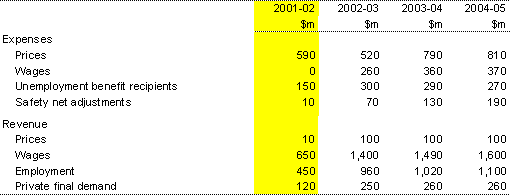Table D1 provides a guide to the sensitivity of the forward estimates of GFS expenses and GFS revenue to variations in economic parameters. The analysis presents the estimated effects of a change in one economic variable only, and does not attempt to capture the linkages between economic variables that characterise changes in the economy more broadly. It is important to recognise that such guides provide only a `rule of thumb' indication of the impact on the budget of changes in economic and other parameters.
Table D1: Sensitivity of financial aggregates to changes in economic parameters

Expenses
On the expenses side, the sensitivity analysis of the estimates provides for the following assumptions about changes to four broad groups of parameters. An increase in any of the parameters considered will lead to an increase in expenses, and a decrease in any of the parameters will lead to a reduction in expenses.
Prices
All price deflators are assumed to change by one percentage point at the start of the March quarter 2002, with wage deflators left unchanged.
- The effect of a change in prices is due to the indexation of Commonwealth expenses and a change in the nominal superannuation interest expense.
Wages
All wage and salary growth rates are assumed to change by one percentage point from the beginning of the March quarter 2002, with price deflators left unchanged.
- The effect of a change in wage and salary growth rates is largely determined by the effect of the Government's commitment to maintain selected pensions at 25 per cent of Male Total Average Weekly Earnings. The wages effect in Table D1 above does not include the effect of changes to wage and salary payments on Commonwealth departmental expenses.
Unemployment benefit recipients (includes Newstart Allowance and unemployed Youth Allowance recipients)
The total number of recipients is assumed to change by 5 per cent in the Budget year and in all the forward years.
Safety Net Adjustment
The Safety Net Adjustment (SNA) determined by the Australian Industrial Relations Commission (AIRC) is assumed to change by $2 per week from the beginning of the March quarter in each year.
- About $45 billion of expenses, comprising agency departmental expenses, other Commonwealth Own Purpose Expenses and Specific Purpose Payments to the States of a departmental expense nature, are indexed to weighted averages of movements in inflation and the SNA.
Revenue
On the revenue side, the sensitivity analysis of the estimates provides for the following assumptions about changes to four broad groups of parameters. An increase in any of the parameters considered will lead to an increase in revenue, and a decrease in any of the parameters will lead to a reduction in revenue.
Prices and wages
The assumptions underlying the sensitivity of the revenue estimates to changes in prices and wages are similar to those used for expenses.
- The effect of a change in prices affects revenue primarily through changes in excise revenue.
- The effect of a change in wages affects revenue predominantly through changes in PAYG withholding tax and FBT revenue.
Employment
The level of employment is assumed to change by one percentage point from the beginning of the March quarter 2002, with no change in the composition of demand.
- The effect of a change in employment feeds through into tax revenue largely through increases in PAYG withholding tax collections.
Private final demand
The level of private final demand (consumption plus investment) is assumed to change by one percentage point from the beginning of the March quarter 2002, with no change in the composition of demand.
- The effect of a change in private final demand affects revenue predominantly through changes in excise and customs duty collections.